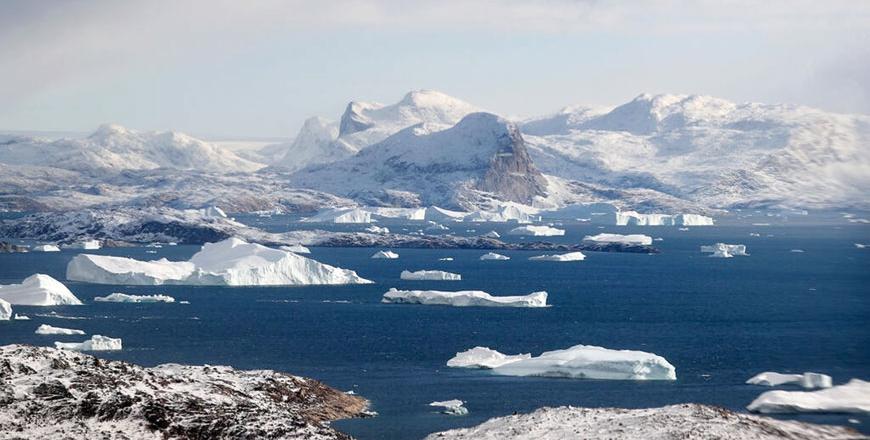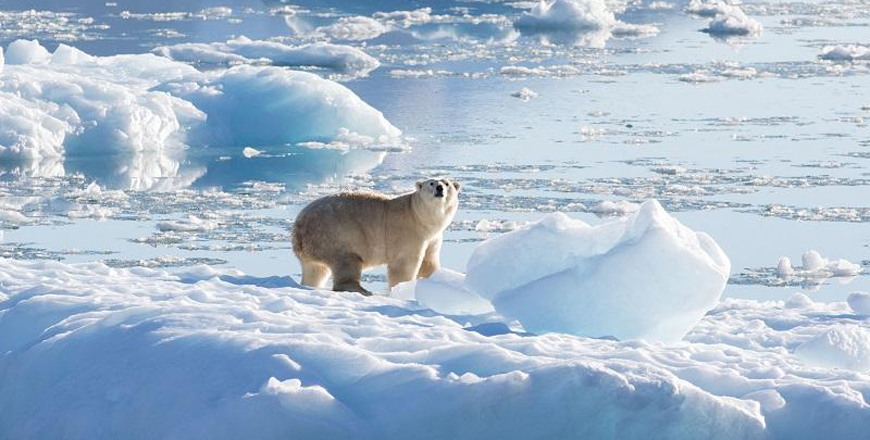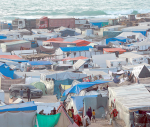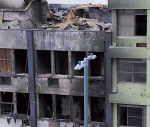You are here
Greenland’s rapidly melting ice shelves risk ‘dramatic’ sea level rise — study
By AFP - Nov 07,2023 - Last updated at Nov 07,2023

Greeland’s ice sheet is under pressure from human-induced climate change (AFP photo)
PARIS — The last remaining Northern Greenland ice shelves bracing the region’s vast ice sheet have lost a third of their volume in the last four decades, researchers said on Tuesday, warning of the risk of “dramatic” sea level rise.
The floating shelves play a crucial role in regulating the flow of ice into the ocean from glaciers hosting enough ice to ultimately raise sea levels by 2.1 metres.
These ice shelves have lost more than 35 per cent of their total volume since 1978, with three of them collapsing completely, the study found.
With continued global warming driven by fossil fuel pollution expected to further heat ocean waters, the ice shelves are “extremely vulnerable” to further retreat and even collapse, according to the study published in Nature Communications.
“This could have dramatic consequences in terms of SLR [sea level rise],” the authors said.
They added that this is the area of Greenland with the greatest potential to raise ocean levels, possibly over centuries.
The melting of the ice shelves themselves does not contribute to sea level rise but they exist as “dams” regulating the discharge of ice into the ocean from the ice sheet.
If these natural barriers disintegrate, it may cause the glaciers to dump more ice into the oceans, the study found.
‘Significant’
rise in melting
Glaciers in this region had previously been considered stable by scientists, unlike other parts of Greenland’s ice sheet that began to weaken in the mid-1980s.
But the authors found that the glaciers have started to discharge ice in response to weakening ice shelves, which have been melting from below by warming oceans.
“We have identified a very significant increase in melting since the 2000s which clearly corresponds to a rise in ocean temperatures in this area during that time,” lead author Romain Millan, a researcher at the French National Centre for Scientific Research, told AFP.
The researchers based in Denmark, France and the United States used thousands of satellite images combined with field measurements and climate models to reconstruct the nature of these buoyant glacier extensions.
Greenland’s northern glaciers have only started to destabilise in the last 20 years, meaning more ice has been lost than gained.
“The glacier Zachariae Isstrom, for example, which broke loose in 2003 almost doubled the amount of ice it discharged into the ocean,” said Millan.
The Greenland ice sheet is a major contributor to global sea level rise, accounting for some 17 per cent of the observed rise in water levels between 2006 and 2018.
“What happens to the poles and sea levels in the future depends on the decisions taken by politicians to reduce greenhouse gas emissions,” said Millan.
World leaders and climate negotiators will gather in Dubai from November 30 for the latest United Nations summit as record-shattering temperatures, rising wildfires and worsening natural disasters heighten alarm about the fate of the planet.
Related Articles
PARIS — Even without any future global warming, Greenland’s melting ice sheet will cause major sea level rise with potentially “ominous” imp
By Marlowe HoodAgence France-PressePARIS — The ice sheet atop Greenland — which holds enough frozen water to swamp coastal cities worldwide
PARIS — Part of Greenland's ice sheet is thinning further inland than previously believed, which will likely lead to greater sea level rise


















